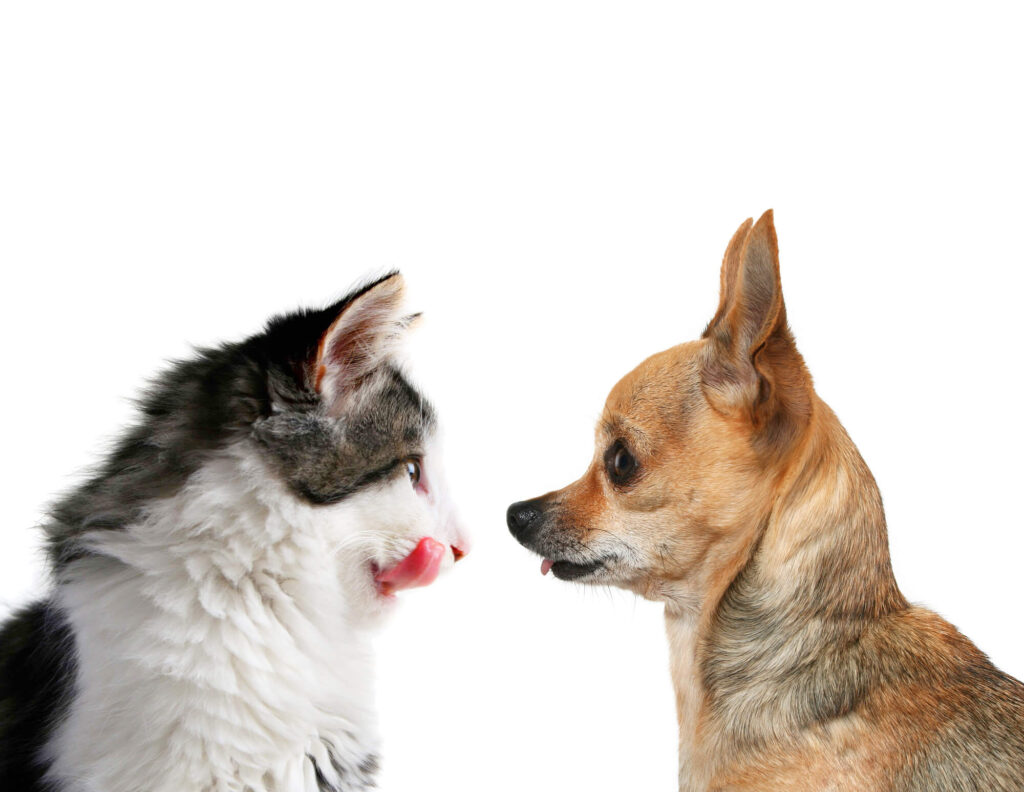How Big is a Chihuahua Brain? Everything You Need to Know
If you’re a Chihuahua owner or simply curious about the breed, you might be wondering “how big is a Chihuahua brain?”
Despite their small size, Chihuahuas are known for their big personalities, small size, and quirky behaviors.
In this blog post, we will explore the fascinating world of Chihuahua brains.
We will shed light on the incredible inner workings of a Chihuahua’s brain, brain development, and potential brain problems.
Understanding your Chihuahua’s brain health and cognition is key to ensuring their overall well-being and happiness.
Our practical tips will help you improve your furry friend’s brain health, keeping their minds sharp and engaged.

How Big is a Chihuahua’s Brain?
The size of a Chihuahua brain on average is comparable to that of a tangerine, measuring approximately 2 ¾ inches in diameter.
Interestingly, this size is consistent across various dog breeds. Most dog brains weigh between 53 and 104 grams.
What’s intriguing is that the brain-to-body mass ratio of a Chihuahua stands at around 1:125, surpassing the average ratio observed in most other dog breeds.
This means that even though their brain is small, it is relatively large in proportion to their overall body size, giving Chihuahua’s the biggest brain size.
Even among Teacup Chihuahuas, their brain size remains consistent, even though they only weigh an average of 3 lbs.
How Much Does a Chihuahua Brain Weigh?
According to this Pubmed study measuring the correlation between brain weight and yawn duration, it found a Chihuahua brain weighs around 55.10 grams (0.12 lbs).
In contrast, a human brain weighs 1300 to 1400 grams (around 3 lbs), roughly 25 times heavier than that of a Chihuahua.
Notably, in the study, Chihuahuas exhibited a mean body weight of 3.35 kg (3350 grams or 7.4 lbs).
This translates to their brain constituting 1.6% of their total body weight, granting them the largest brain-to-body size ratio among all dog breeds.
In comparison, a Beagle’s brain constitutes 0.6% of their body weight and a Labrador Retriever’s brain is only 0.3% of their weight.
While the Chihuahua’s brain may be small, it’s still capable of performing all the necessary functions required for the breed to thrive.
Chihuahua Brain Size Comparison With Other Breeds

When it comes to dogs, Chihuahuas are one of the smallest breeds.
Naturally, you might wonder how their brain size compares to larger breeds like Great Danes or Golden Retrievers.
Research has shown that smaller dogs have relatively larger brains compared to their body size than larger breeds.
This means that while a Chihuahua’s brain is small, it is still proportionate to their body size. In fact, Chihuahuas have the largest brain-to-body size ratio among all dog breeds.
Here’s a table using data from this Pubmed study showing the average brain weight of different dog breeds for comparison:
| Breed | Mean Brain Weight (grams) | Mean Body Weight (grams) |
|---|---|---|
| Chihuahua | 55.10 (.12 lb) | 3350 (7 lb) |
| Dachshund | 68.03 (.15 lb) | 7200 (16 lb) |
| Pug | 71.85 (.16 lb) | 8790 (19 lb) |
| Bull Dog | 94.78 (.21 lb) | 24080 (53 lb) |
| Golden Retriever | 101.63 (.22 lb) | 31040 (68 lb) |
| Great Dane | 120.54 (.27 lb) | 57750 (127 lb) |
As you can see, while Chihuahuas have the smallest mean brain weight, it is still a significant portion of their overall body weight.
Chihuahua Brain Structure
There are two distinct types of Chihuahua skulls: the apple head and the deer head.
The apple head Chihuahua has a round skull, while the deer head Chihuahua has a longer, more narrow skull.
So, what does a Chihuahua brain look like? It is about the size or a tangerine or lemon.
In terms of brain structure, Chihuahuas share a common layout with other dog breeds. The canine brain is divided into 3 regions: the cerebrum, cerebellum, and brainstem.
The cerebrum is responsible for higher cognitive functions, such as decision-making and memory, while the cerebellum controls movement and balance.
The brainstem regulates basic bodily functions such as breathing and heart rate.
The Chihuahua brain displays less cortical folding, known as gyri and sulci, than a human brain.
These folds are responsible for increasing the surface area of the brain, allowing for more complex functions.
The diminished folding in a dog’s brain is thought to reflect their relatively simpler cognitive abilities.
In the video above, you can see how a dog’s brain is not as wrinkled as a human brain.
The brain is also composed of different types of cells, including sensory neurons and motor neurons, which work together to transmit and process information.
Chihuahua Brain Development

During the first few weeks of life, a Chihuahua’s brain is still developing.
A puppy’s brain undergoes a process of rapid growth and development, including the formation of new neurons and the establishment of neural connections.
This process is driven by a combination of genetic and environmental factors, including exposure to sensory stimuli such as light, sound, and touch.
It continues to grow rapidly in the first few months and by 6-12 months, the brain is fully developed.
Genetics play a role in the development of a Chihuahua’s brain.
Some Chihuahuas are born with a condition called molera (open fontanelle), which is a soft spot on the top of the skull where the bones have not fully fused together.
It usually closes by 9-12 weeks of age, but can persist longer.
While molera is not harmful, it can affect brain development if the puppy experiences trauma to the head, which could cause a brain injury.
It can also be caused by hydrocephalus (accumulation of cerebrospinal fluid).
Upbringing also plays a role in brain development.
Puppies that receive proper socialization and nutrition are more likely to develop a healthy brain.
On the other hand, puppies that are neglected or mistreated may experience stunted brain development.
Human Brain Vs Dog Brain
According to a study published in Popular Science, the human brain-to-body ratio is approximately 1:40. In contrast, in dogs, this ratio is about 1:125 for all breeds.
This means that humans have a relatively larger brain in proportion to their body size compared to dogs.
Both humans and dogs have similar brain structures and functions.
One of the most notable differences between a dog’s brain and a human’s brain is the relative size of the olfactory bulb, which is responsible for processing smells.
In dogs, the olfactory bulb is much larger in proportion to the rest of the brain compared to humans, indicating that dogs have a highly developed sense of smell.
Compared to a human brain, the prefrontal cortex of a dog brain is smaller and has fewer folds, meaning less surface area.
This means that humans have a greater capacity for learning, problem-solving, and decision-making.
Are Chihuahuas Smart?

Chihuahuas are often seen as small, cute, and cuddly lap dogs. But what about their intelligence?
Dr. Stanley Coren, a renowned canine psychologist, conducted a study published in his book “The Intelligence of Dogs.”
He explored the different types of intelligence exhibited by various dog breeds.
According to the study, Dr. Coren categorizes dog intelligence into three dimensions: Instinctive, Adaptive, and Working & Obedience Intelligence.
Chihuahuas ranked 125th out of 138 breeds.
They ranked fairly high in Adaptive Intelligence, which refers to their ability to problem-solve, learn from past experiences, and adapt to new situations.
Chihuahuas are also very observant and can pick up on subtle cues from their owners.
They typically bond with one person and are very alert.
Dogs in general are about as smart as 2-year-old children.
It’s important to note that intelligence can vary from dog to dog, just like it does with humans.
If this topic interests you, don’t miss our blog post on how smart are Chihuahuas.
How to Improve Cognitive Function in Dogs
Improving cognitive function can help keep your Chihuahua’s brain healthy and sharp. Here are some tips to help improve your dog’s cognitive function.
Mental Stimulation
Providing mental stimulation is key to keeping your Chihuahua’s brain active. You can do this by introducing new toys and puzzles.
Regularly rotating their toys prevents monotony and sustains their interest.
Hiding treats for your dog to find or using a snuffle mat adds an extra layer of engagement, prompting your dog to use their problem-solving and scent skills while uncovering rewards.
Interactive Games
Interactive games are a great way to keep your Chihuahua’s brain engaged.
Games like hide-and-seek, scavenger hunts, and treat dispensers can help improve cognitive function while also providing physical exercise.
We have a whole blog post dedicated to the best games to play with your Chihuahua.
Physical Exercise
Regular physical exercise is important for overall health and can play a role in enhancing cognitive function.
Taking your Chihuahua for walks or hikes not only offers physical stimulation but will help keep their brain healthy and keep the blood pumping.
Training
Training is another way to improve cognitive function. Teaching your Chihuahua new tricks not only keeps their mind active but also engages their cognitive abilities.
Exploring agility training can provide them with stimulating challenges, promoting mental agility and problem-solving skills.
Healthy Diet
Nutrient-rich foods provide essential building blocks for brain health and function.
Omega-3 fatty acids, found in sources like fish oil, contribute to cognitive development and may help reduce cognitive decline in aging dogs.
Antioxidant-rich foods, such as blueberries and spinach, protect brain cells from oxidative stress and support cognitive longevity.
Adequate protein intake supports neurotransmitter production, aiding in efficient communication between brain cells.
Chihuahua Brain Problems
As a Chihuahua owner, it’s important to be aware of potential Chihuahua brain problems and neurological disorders that your pup may face. Here are some common problems that you should know about.
Hydrocephalus
Hydrocephalus is a condition in which there is an abnormal buildup of cerebrospinal fluid in the brain.
This can cause the brain to swell and put pressure on the skull, which can lead to brain damage.
It can be congenital or caused by a brain tumor or infection.
Chihuahuas are more prone to this condition than other breeds due to their small size.
Hydrocephalus in Chihuahua puppies is common.
If it is mild, treatment will likely help the puppy survive, but if it is severe, few puppies will live over the age of 2.
Symptoms of hydrocephalus include abnormal walking, circling, head pressing (different from headbutting) seizures, and pacing.
Encephalitis
Encephalitis is an inflammation of the brain that can be caused by a viral or bacterial infection or an overactive immune system.
The inflammation disrupts normal brain function, leading to a range of symptoms.
Symptoms include seizures, walking in circles, lack of balance, and behavior changes.
Dog Dementia
Just like humans, dogs can develop dementia as they age.
Dog dementia, also known as Cognitive Dysfunction Syndrome (CCD), can cause a decline in cognitive function and memory loss.
Chihuahuas are at a higher risk of developing this condition due to their longer lifespan.
Symptoms of senior dog dementia include confusion, disorientation, aimless wandering, irritability, staring blankly, and loss of appetite.
Seizures
Seizures are a common neurological problem in Chihuahuas.
They can be caused by a variety of factors, including genetics, brain tumors, liver disease, and kidney failure.
Symptoms of seizures include uncontrollable shaking, a dazed look, lip licking, loss of consciousness, and salivation.
Brain Tumors
Brain tumors can occur in dogs of any breed, but they are more common in Boxers, Golden Retrievers, Scottish Terriers, Old English Sheepdogs, and Doberman Pinschers.
Dogs with long, narrow heads are also more likely to develop a brain tumor known as a meningioma.
The precise cause of brain tumors in dogs remains elusive, yet several factors like genetics, chemicals, the environment, and the immune system are speculated to contribute to their development.
If your Chihuahua has a brain tumor, possible symptoms include circling, head tilting, strange behavior, and a wobbly gait.
Brain Injuries & Brain Damage
Chihuahuas are small and delicate, which makes them more prone to brain injuries and brain damage.
This can be caused by trauma to the head, such as a fall or a car accident, a blood clot, prolonged fever, bleeding in the brain, and cardiac or respiratory arrest.
Symptoms of brain injuries and brain damage include seizures, bleeding from the nose or ears, slow heart rate, and uneven pupils.
Is A Chihuahua Brain Too Big For Its Skull?
You may have heard the claim that a Chihuahua’s brain is too big for its skull, but is there any truth to this statement?
No, fortunately, a Chihuahua’s brain is made to accommodate their skull.
If not, there would be fatal consequences.
Chihuahuas do possess a comparatively larger brain considering their body size; however, their skull is appropriately sized to provide enough space for their brains.
Are Chihuahuas Smarter Than Cats?

Both dogs and cats have their unique strengths and cognitive abilities, making it challenging to definitively determine which species is “smarter.”
According to this study published in Frontiers in Neuroanatomy, it seems like dogs are smarter than cats.
The results showed that dogs had twice as many neurons in their cerebral cortex as cats (530 million vs 250 million).
To put that into perspective, humans have billions of neurons.
Having a higher count of neurons suggests that those with more complex cerebral cortexes have an increased capacity for intricate cognitive functions and advanced mental capabilities.
Cats do have a smaller size brain than dogs, but brain size doesn’t necessarily correlate with intelligence.
Summary
Now you have your answer to “how big is a Chihuahua brain?”
Were you surprised at what you learned?
While their brains are small, they are still capable of learning and performing various tasks.
A Chihuahua’s brain size is just one aspect of their overall intelligence and behavior.
Other factors such as genetics, training, and socialization play a significant role in a dog’s cognitive abilities.
If dog science intrigues you, don’t miss our blog post on how big is a Chihuahua stomach and how big is a Chihuahua’s heart.
FAQs
Do Chihuahuas Have A Good Memory?
Yes, Chihuahuas have a good memory. Like all dogs, Chihuahuas have the ability to remember past events, experiences, and people. They can learn and recall routines, training cues, and the locations of things like food and toys.
Are Chihuahuas Fast Learners?
Chihuahuas can be fast learners, but their learning speed can vary from dog to dog. Some Chihuahuas pick up commands and tricks quickly due to their eagerness to please. However, others might require more time and patience during training.
Are Chihuahuas Easy to Train?
Each Chihuahua is unique when it comes to training. Their personality affects their willingness to cooperate and the success of the training. Reward-based training can help motivate them. Potty and obedience training Chihuahuas can present some challenges, requiring more effort than some other breeds.
Related posts:





![How Fast Can a Chihuahua Run? [26 Chihuahua Running Tips]](https://thechihuahuashack.com/wp-content/uploads/2022/06/how-fast-can-a-chihuahua-run-1-768x513.jpg)
